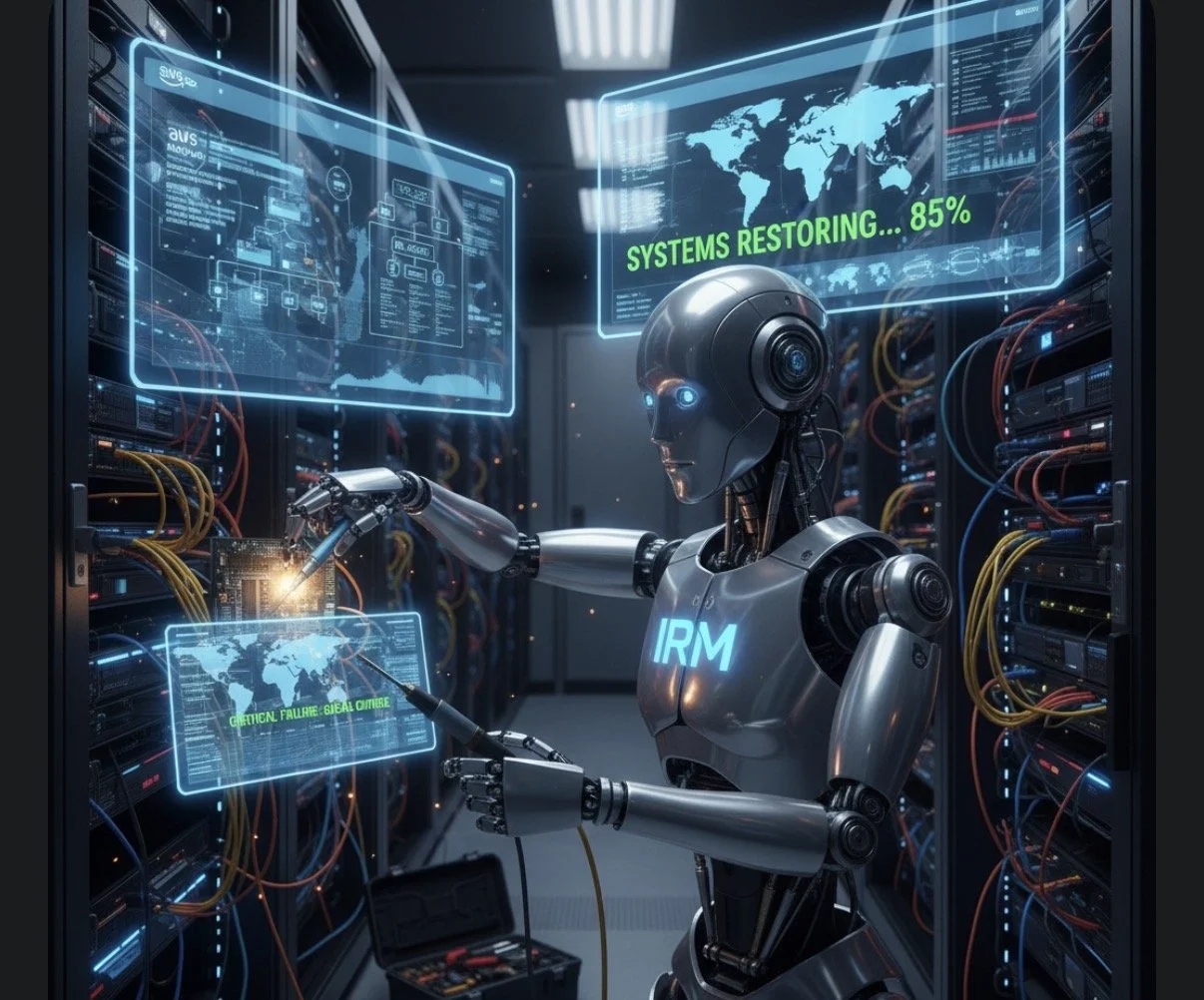
Click here to access subscription content at The RTJ Bridge - The Premium Version of The RiskTech Journal
〰️
Click here to access subscription content at The RTJ Bridge - The Premium Version of The RiskTech Journal 〰️
The RiskTech Journal
The RiskTech Journal is your premier source for insights on cutting-edge risk management technologies. We deliver expert analysis, industry trends, and practical solutions to help professionals stay ahead in an ever-changing risk landscape. Join us to explore the innovations shaping the future of risk management.

AWS Outage, What Happened And How To Prepare With Integrated Risk Management
On Monday, October 20, a fault in Amazon Web Services’ US-EAST-1 region disrupted Domain Name System (DNS) resolution for the Amazon DynamoDB regional endpoint. The failure propagated into other AWS subsystems that rely on that endpoint and produced widespread service degradation across many internet applications. AWS reported that services stabilized by late afternoon Pacific time, with some services clearing backlogs afterward. These facts are supported by AWS service updates and independent internet measurement reports.

From Permit to Platform—How CTRL WRK Turns Lockout/Tagout into an Autonomous IRM Use Case
A high-risk, paper-bound safety workflow finds new life on the ServiceNow platform—signaling a broader shift toward AI-enabled operational risk intelligence.
What was once a clipboard-bound safety task has now become a signal of something larger: the acceleration of Autonomous Integrated Risk Management (Autonomous IRM) through purpose-built, domain-native micro-apps. On June 2, CTRL WRK—a GenAI-powered “Control of Work” (CoW) application focused on lockout/tagout (LOTO) permitting—launched on the ServiceNow Store. While its function is precise, the implications are far-reaching.
This is more than digitization. It’s the embodiment of a broader market shift: from static compliance toward dynamic, AI-enabled risk management embedded directly into operational workflows.

Operational Intelligence — How IRM Solves Connected Risk Failures
in today’s digital risk environment, agility and resilience are everything. Risk events once considered unlikely—global cyber disruptions, third-party failures, data breaches, operational breakdowns—now occur with alarming frequency. As these risks grow more interconnected, traditional Governance, Risk and Compliance (GRC) frameworks, often built around static risk registers and slow reporting cycles, are no longer sufficient.
Risk management is evolving from a reactive back-office control utility into a strategic engine of operational intelligence. Enabled by advancements in risk technology, analytics, and real-time data integration, modern Integrated Risk Management (IRM) platforms are helping organizations detect emerging operational risks earlier, connect siloed insights, and embed resilience into the core of enterprise decision-making.
This article previews that transformation—and offers a forward look at what’s coming in the IRM Navigator™ ORM Report – Q2 2025, which evaluates key trends, capabilities, and vendors shaping the future of operational risk management (ORM).

Citi's $81 Trillion Error Highlights Urgent Need for Stronger Integrated Risk Management
The startling news that Citigroup mistakenly credited a client’s account with $81 trillion instead of a mere $280 underscores a critical weakness pervasive in today’s financial institutions: insufficiently robust integrated risk management (IRM) systems. This incident, termed a “near miss” by Citi, reveals deep-seated operational vulnerabilities that continue to plague banks, despite considerable investment and regulatory scrutiny.

The Implications of DORA Starting Today: Opportunities for Integrated Risk Management to Drive Resilience
Today, January 17, 2025, marks a turning point for the European financial sector as the Digital Operational Resilience Act (DORA) officially takes effect. This comprehensive EU regulation introduces a harmonized framework for managing ICT risks, requiring financial institutions and their ICT third-party service providers (TPSPs) to meet stringent requirements for governance, incident reporting, and resilience. This article explores the implications of DORA, highlights the four key objectives of IRM, and provides guidance for financial institutions as they navigate this new regulatory environment. For further insights, visit wheelhouseadvisors.com.

Navigating the DORA Deadline: Why Integrated Risk Management is Critical
The clock is ticking for financial institutions and ICT suppliers as the EU’s Digital Operational Resilience Act (DORA) prepares to take effect on January 17, 2025. This ambitious regulatory framework aims to bolster the financial sector's resilience against cyber disruptions, mandating a series of stringent requirements on operational monitoring, incident reporting, and third-party risk management. Yet, the urgency of compliance efforts has uncovered a glaring challenge: organizations without Integrated Risk Management (IRM) systems risk falling short of these critical obligations.

The Evolving Perspective on Generative AI: From Technology Risk to Operational Risk
In financial services, generative AI (GenAI) has rapidly emerged as both a transformative opportunity and a formidable risk. According to a recent ORX survey, three-quarters of financial institutions now classify oversight of GenAI under operational risk. This pivotal shift highlights how GenAI is increasingly perceived as a broader business risk rather than merely a technology-specific challenge. For banks and other financial institutions, this development underscores the necessity of integrated risk management (IRM) frameworks to effectively navigate the complexities of AI adoption.

The Maestro of IRM: Conducting the Masterpiece of Modern Risk Management
In the intricate world of risk management, where every decision plays a crucial part in the overall performance of a business, envisioning the integrated approach of governance, risk, and compliance (GRC) alongside Technology Risk Management (TRM), Operational Risk Management (ORM), and Enterprise Risk Management (ERM) as a symphony orchestra offers a compelling narrative.
